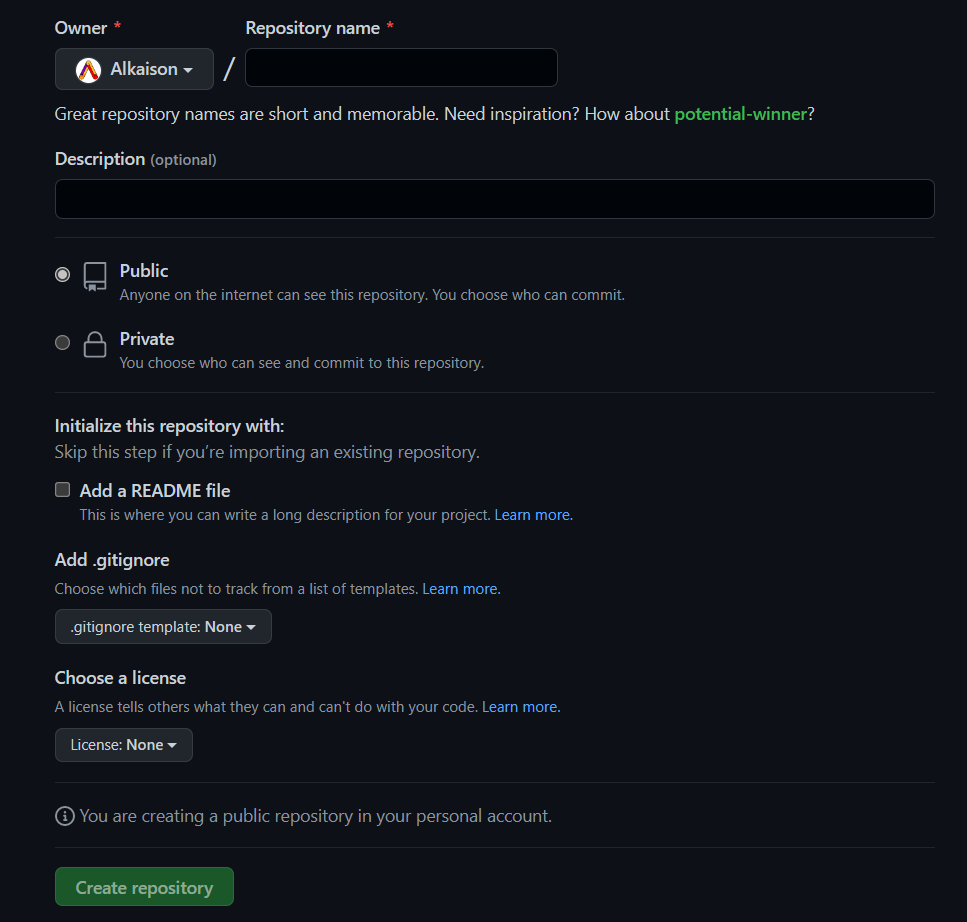New GitHub Account
- Create a GitHub account to create your remote repositories. Now, create a new repo where we will be uploading our files from local repo.
- Note - Local repository (repo.) means the repo. which is on our system whereas, remote repo. means the one which is on other remote system/server, for eg. - GitHub, GitLab, Bitbucket, etc.
Push local repo to GitHub
Copy the url or the link of the repo that we just created.
Paste the copied url in the below git command.
1
git remote add origin <paste copied URL here>
CTRL + V won’t work in terminal. Use SHIFT + INSERT to paste the link into the terminal.
Add Remote Destinations
It specifies that we are adding a remote repository, with the specified URL, as an origin to our local Git repo.
Finally, pushing our master branch to the origin URL (remote repo) and set it as the default remote branch.
1
git push --set-upstream origin master
- Go back into GitHub and see that the repository has been updated.
Pushing local repo to GitHub
- First commit all the changes. Then push all the changes to our remote origin i.e. remote repo on github.
1
git push origin
Pull local repo from GitHub
- Git pull is used to pull all changes from a remote repository into the branch we are working on. It is a combination of fetch and merge. Use it to update your local Git.
1
git pull origin
Pull Branch from GitHub
- First, check which branches we have and where are we working at the moment by using this command.
1
git branch
- Since we do not have the new branch on out local Git which is to be pulled from the Github. So, to see all local and remote branches, use -
1
git branch -a
For viewing only remote branches
1
git branch -r
- Now, the new branch is seen in the console but it is not available on our local repo. So, let’s check it out using
1
git checkout <branch name>
- Now run the below command to pull that branch on our local repo.
1
git pull
- We can now check the available branches using the command.
1
git branch
Push branch to GitHub
- First, let’s create a new local branch which we will be pushing to Github. Enter the command as
1
git checkout -b <branch name>
- You can check the status of the files in this current branch using
1
git status
- Commit all the uncommitted changes for all the files in this branch using
1
git commit -a -m “<Message>”
- Now push this branch from our local repo to Github using
1
git push origin <branch name>
Git Clone from GitHub
We can clone a forked repo from Github on our local repo. A clone is a full copy of a repository, including all logging and versions offiles. Move back to the original repository, and click the green “Code” button to get the URL to clone. Copy the URL.
Now in the git bash, enter the following command to clone the copied repo onto your local machine
1
git clone <copied URL>
- To specify a specific folder to clone to, add the name of the folder after the repository URL, like this
1
git clone <copied URL> <folder Name>

